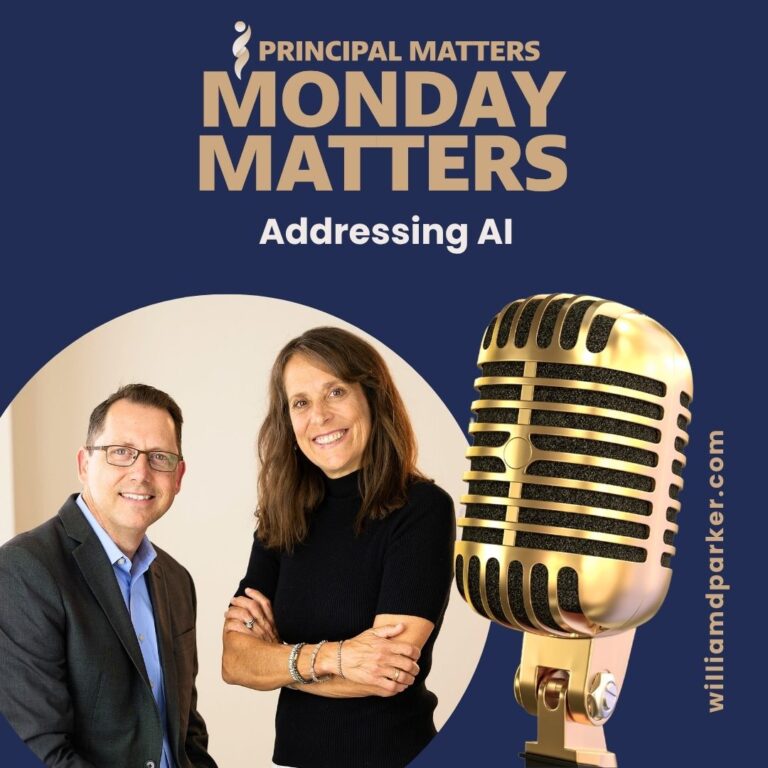Podcast: Play in new window | Download
This week Jen Schwanke joins me as we talk about research on trends among students. As always, Jen’s feedback on this discussion adds so much value to how you apply practical responses to the real-life scenarios educators encounter when serving students – especially those struggling with anxiety or other emotional challenges connected to emerging technologies. Listen-in to the entire conversation for those great takeaways!
I’ve also taken time to write a summary of the notes and sources I mention in the show that you can read below for reference:
Serving Generations by Understanding How To Walk Together, by William D. Parker
I’m curious if you like to go for walks? I enjoy a good walk – especially when the weather is pleasant, there is a pleasant road ahead of me, and I have a companion to share good conversation with as we saunter along. A good walk doesn’t even need to include a destination as the walking experience may be the destination.
Let’s pretend that you were born in a time, place or physical condition where you had never seen or experienced a walk. I could explain ‘a good walk’ to you, but wouldn’t it be so much more meaningful if I was able to just go with you on a walk together?
Now, I want you to think about explaining generation trends and differences. Psychologists, researchers and educators spend a lot of time considering challenges, trends or differences in the various age groups, time periods and applications that happen between generations. This analysis can be very helpful. At the same time, wouldn’t it be even more helpful if I could take a walk with you to help understand the life experience through dialogue and shared stories?
Think-Tank Invitation
Recently, I was invited to a “Think Tank” session in Atlanta, Georgia, with some fellow educators. The event was hosted by Dr. Tim Elmore, the Founder of Growing Leaders. In attendance was the Growing Leaders executive team, several college interns, a few consultants and business owners, an executive coach and a set of educators from local schools, including the 2023 Georgia State Teacher of the Year, Michael Kobito.
During this day-long session, we also had a live virtual session with Dr. Jean Twenge, author of the new book, Generations: The Real Differences Between Gen Z, Millennials, Gen X, Boomers, and Silents―and What They Mean for America’s Future.
Dr. Twenge’s research provides evidence to what many of us have already been seeing in practice. Adolescents are facing a mental health crisis. From 2011-2019, teen depression has doubled. Dr. Twenge’s research also shows that increases in self-harm and depression are correlated with increase in use of technology, including social media. Students today sleep less and interact in less face-to-face conversations than their predecessors. According to Dr. Twenge, the younger a child has access to a Smartphone, the greater his or her mental health challenges.
Her recommendation to policy makers and parents: raise the age of social media access to 16 years of age. Dr. Twenge is not alone in her concerns. Dr. Tim Elmore shared stories of parents who have encouraged delayed access and the benefits these young people report. As Dr. Twenge said in our meeting, “If social media and smartphones are a root cause, we can actually do something about it.”
This summary is not my attempt to recommend or prescribe policy. In fact, I listened to others in the Think-Tank share thoughts of trends they are seeing in education, industry, and culture, I wrote down five ideas I believe help add some additional context to Dr. Twenge’s data.
Here are five other areas I would like highlight that are also affecting the current economic and social factors we are currently experiencing in the U.S.:
5 Trends Influencing Current Dynamics in the U.S.
As we heard stories from educators, business owners and students, several trends emerged that seem consistent and persistent in our current cultural experience. Feel free to take a deeper dive into this topic through your own research, but in summary, I would like to provide a short assessment of trends I am seeing where I live at the time of this writing:
- We are increasingly raising a “parentless” generation. Nearly 30% of U.S. children, for instance, are born into single parent households with an alarming number being raised by grandparents or other caregivers.
- We are an increasingly “childless” generation. U.S. birth rates have been declining for years, and at the current rate of childbirth in the U.S., our younger generation population numbers will far below the number of people retiring.
- We are a retiring generation. Baby Boomers are leaving the workforce, and we do not have an equal number of adults stepping into positions they are vacating.
- We are grieving a deceased population. Deaths throughout the pandemic lowered instead of increased the life expectancy rates in the U.S. for the first time in a century. The vast majority of deaths during the pandemic were Baby Boomers with more than 800,000 pandemic-related deaths in the U.S. alone for people ages 65 years and older.
- We have a decreasing immigrant population. Even with ongoing debates about the crisis on the U.S. Southern border, immigrants stepping into service industry jobs significantly declined during the Pandemic with an estimated loss of 2 million working age immigrants in 2021. Efforts by both the Trump and Biden administrations have kept immigrant population growth stagnant, and U.S. employers are still feeling the effects of small unemployment rates that increased wages have yet to remedy.
There are certainly more current social, economic or political factors that could be added to the list. Nevertheless, with all of these economic and social factors in play, it should be no surprise that our children feel additional anxiety while technology increases isolation, and loneliness and depression compared to previous generations.
3 Responses for Leaders to Consider
So how do we respond to the new realities in which we find ourselves living? As I said earlier, I want to avoid a prescription. Instead, I would like to encourage better understanding that may lead to some helpful responses.
- We need to raise awareness by listening to one another for understanding. With the advent of the Smartphone and technologies that contain algorithms designed to addict us to social media, it is important that we recognize the new reality we are in while seeking solutions together. Not one person is going to have the resources, wit or expertise to take on the efforts that billion dollar industries have made to influence human behavior. Conversations about awareness that include well-founded research by people like Dr. Jean Twenge, for instance, lead to better understanding about ways we can begin to change our behaviors or respond with new policies or regulations around new technologies.
- We need to ensure places of safety and belonging. No greater concern can be expressed about our current societal condition than the growing epidemic of loneliness for users of technology. The remedy that people are seeking in the small emotional “snacks” of social media time can only be satisfied with the real-life “feasting” found in real-life communities. We should reexamine what it means to create spaces where every person feels accepted and safe in families, schools, churches and neighborhoods. This can only happen when we commit to pushing back against trends to separate ourselves into opposing political and social groups and focus instead on the real-life common experiences that unite us.
- We need permission for young people to have their voices heard. A young man in our focus group, a soon-to-be college senior, explained one reason young people depend on social media: “In a world where older generations seem to hold the majority of power, young people do not see where they have opportunity or permission to have a voice.” I was so grateful when he said this. So often, older generations like my own are quick to express solutions and remedies for others without considering how little space we give younger generations to express their concerns. Instead, how do we make sure younger generations are not only at the table, but have a voice in decisions affecting their futures?
Let’s Wrap This Up
Sometimes I feel like the conversations around generational differences make our younger counterparts feel like we are trying to describe a road we have not walked with them. Many times our assessments of their differences or challenges sound more like an indictment than an attempt to understand their real-life experiences. Research is helpful; however, it is most helpful when we allow ourselves permission to talk with one another, not just about one another.
The same young people we see struggling with anxiety are also a generation of students who care deeply: they are more interested than past generations in respecting diversity, finding solutions for global warming, and ending social ills like school violence.
I’m grateful for the opportunity I had recently to walk the road with other thinkers, educators and young people around this topic. The challenges of education are not growing any easier. However, we have met great challenges before and found solutions.
We now have a mental health crisis in some ways directly connected to addictive behaviors around newer technologies. As we increase our awareness, let us also stay committed to having real life conversations with each other – and especially with our young people – around ways to help them find real-life places of safety and belonging where their voices are heard and respected.
Now It’s Your Turn
In what ways may a round-table discussion be helpful for teams of teachers or students whom you are leading? How are you modeling healthy habits in your own use of technologies? What is one real-life conversation you might have today that could replace the ‘snacking” of relationships we often look for in our use of technologies?
I’d like to express deep gratitude to my friends at Growing Leaders for inviting me to the Think Tank which inspired this post. You can find out more about their work at http://growingleaders.com/.




